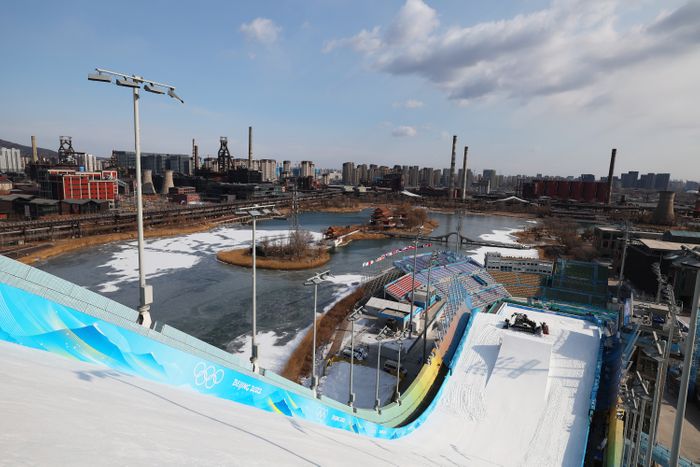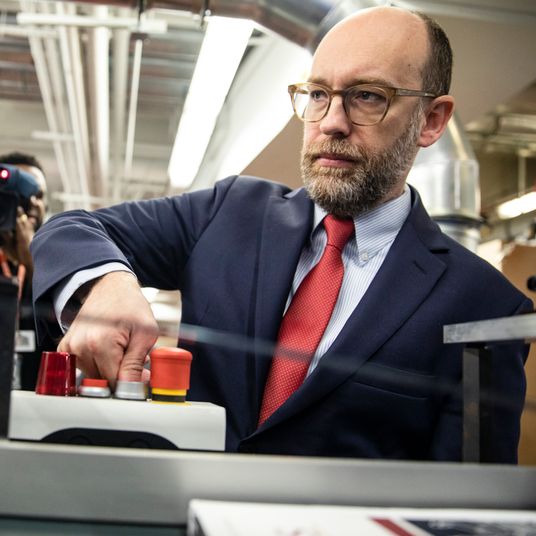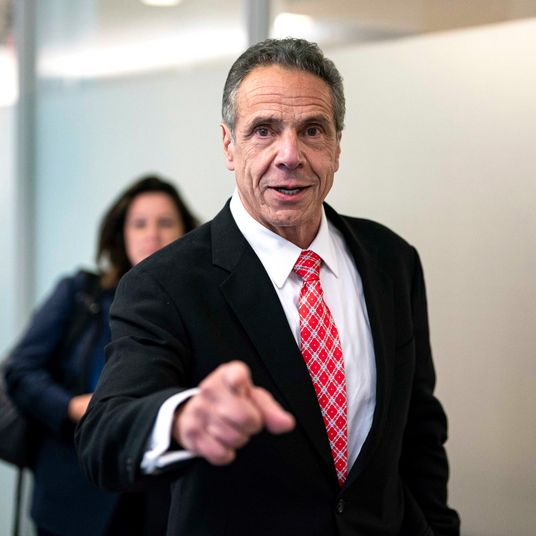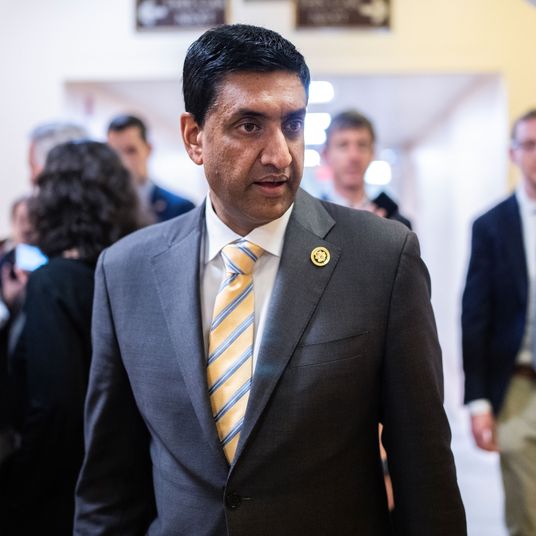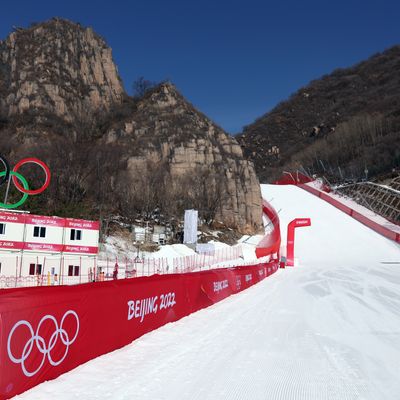
China’s National Alpine Skiing Center, tucked inside a nature reserve amid the arid mountains west of Beijing mountain, is hardly a winter wonderland this time of year. The complex, which was completed in 2019 after four years of intense construction, will see highs above freezing when downhill events officially begin on Sunday. But mildish temperatures are not the only hurdle organizers needed to contend with. In the early months of the year, the region averages around a tenth of an inch of precipitation. All skiing and snowboarding contests at the 2022 Winter Olympics will rely exclusively on artificial snow, a first for the Games.
There will be many strange sights at this first winterless Winter Olympiad. Racecourses will be packed down with groomed snow made up of 49 million gallons of reservoir water, as the surrounding hillsides remain a shade of brown familiar to the spring skiers of the Appalachians. The dramatic crags by the finish line on Xiaohaituo, the mountain home to the ski center, are totally bare, as are the peaks surrounding the luge run. Easily the weirdest sight — and the one most telling of China’s rapid pace of change in recent years — is the Shougang Ski Jump. The massive ramp was erected next to a foursome of cooling towers on the site of a major steel mill in west Beijing, which closed little more than a decade ago. If stadium lights didn’t restrict their view to the course in front of them, here is what athletes would see from the top:
Artificial environments and fake snow aren’t new features of the Winter Olympics: Between 80 and 90 percent of the powder at the last two games came from machines, and it’s not like pristine halfpipes exist in nature. The ski-jump site may highlight the particularly absurdity of holding the games in Beijing in the first place, but it’s also probably a sign of things to come. Even in colder climes, staging and practicing snow sports the old-fashioned way is becoming increasingly difficult. And as usual, there is also a cost to playing God with nature.
A recent University of Waterloo study found that if the world fails to meet the Paris Agreement’s emissions reduction target of 1.5 degrees Celsius, only one of the 21 sites used for the Winter Olympics since the modern games began in 1924 —Sapporo, in Northern Japan — could provide enough reliable, natural snow to host athletes again in 2050. (As of last September, only one nation, the Gambia, was on track to meet the reduction goal agreed to in 2015; it has since fallen off track.) Most likely, future sites will simply follow the current model and blast fake snow to fill out their runs — as Milan, where it is in the 50s right now, will inevitably need to do in 2026.
“What is really clear is that this is the new normal,” says Mario Molina, executive director at the pro-athlete advocacy group Protect Our Winters. While the idea of a permanent Winter Olympics site has been proposed in some icy alpine redoubt, he says that prospect is “missing the point. Trying to establish a permanent Olympics site is not a solution. There’s not going to be anywhere that’s going to be free of the impact of climate over the long haul.”
Paving over the climate crisis with fake snow might work for the Olympics. But it’s no solution for the athletes whose training grounds are slowly receding up the mountain. “Going back to the start of my career in the early to mid-90s, you could train in the snowy glaciers of Europe throughout the year,” says Lesley McKenna, a British snowboarder who competed in the 2002, 2006, and 2010 winter games. “That’s definitely not the case anymore. Those glaciers we visited in Austria, Switzerland, France, Italy in the mid-90s, a lot of them don’t open for many months of the year now.” Weekend warriors more suited to the resort than the couloir will be even more affected: One study published a decade ago already found that only about half of ski resorts in the Northeast will have seasons long enough to be financially viable by 2050. “I’m a product of an era where all I know is snow sport and now I’m looking at it going, ‘this might not be around for the next generation,’” McKenna says.
In response, many ski destinations have instituted clean-energy goals for themselves, which they hope will power essential services like snowmaking and ski lifts. The Beijing Organizing Committee has also taken this approach, vowing that all venues for the 2022 Olympics will be powered entirely by renewable energy. But there may be a level of greenwashing at play here. The construction of the National Alpine Skiing Center resulted in a 25 percent surface loss of the biodiverse Songshan Nature Reserve and the removal of some 20,000 trees. And in a megalopolis where concerns about water scarcity are growing as rapidly as its population did in the first two decades of the century, 49 million gallons of water will be needed to keep snow on the courses and halfpipes.
Snowsports may not be the defining issue of the climate crisis. But their high international profile — and the fact that people with disposable income don’t want to lose an extremely fun pastime — do allow them to bring attention to the larger problem of retreating snow cover. Snowpacks provide drinking water for 1.9 billion people globally, with as much as 75 percent of freshwater in the parched American west relying on it. (To their credit, the ski companies and athletes have responded in force to protect the $20 billion industry and the snowpack on which so many of us rely.)
Snow, the plaything of the Winter Olympics, has become political. And as always at the games, there is the choice to either face the moment head on or to ignore it. In Beijing, as in climate politics more broadly, we seem to be choosing the latter. For Mario Molina of Protect Our Winters, this decision goes against the spirit of the whole gathering. “The Olympics, for many viewers, are meant to represent the best we have to offer: the best of our talents, the best of our dedication, the best of what humans are capable of,” he says. “To me, it’s not out of place for them to also be the platform for discussing the question of ‘what is the best we can put forth as a society.’ We are not putting the best of us forward as a society when it comes to climate.”



